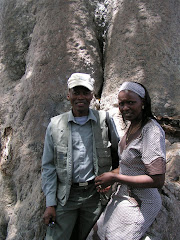Sexual abuse among children is not always talked about in many African families. This is taboo especially as it would expose the family to ridicule and embarrassment. This therefore makes the assessment of possible sexual abuse in a preschool age child a complex undertaking.
According to Walker there are two goals of assessing abuse in a preschool age child are:
1. To provide a sufficient amount of information from which to determine the child’s current emotional status so as to design a treatment plan if necessary.
2. To assess who did what to the child in order to provide future protection of the child." Not all mental health professionals agree with respect to the ‘correct’ procedure or technique.
When assessing sexual abuse among preschool age children the following four parts should be taken into consideration:
• Medical evaluation and diagnosis of the child;
• Psychological evaluation of the parents;
• Evaluation of the family dynamics and home life; and
• Developmental and psychological evaluation of the preschool age child.
Ideally the psychologists assessing possible sexual abuse in the preschool child should interview all members of the family, the babysitter, the preschool teacher, and any other persons who might have knowledge about the child and the family. The following key components should be covered prior to interviewing the child.
• The child’s personal history, including psycho-sexual development.
• The child’s family history.
• History of the child’s development.
• A list of persons having access to the child.
• A list of what the child calls each member of the family group, including pets.
• A list of what the child calls the genitals and elimination functions.
• An idea of the child’s daily routine activities.
• Observations of usual and unusual behaviors.
It is important for the child’s parents to be asked about their marital history, custody, visitation, and what limits they set on their own sexual behavior in the presence of the child victim.
When observing the young child and his or her respective parents, particularly if there is the possibility that allegations in the context of a custody dispute may be false can be very helpful. Custodial parents may protest vehemently, claiming it will traumatize the child and that the child has no relationship with the other parent or is terrified of him. Sometimes these concerns may be legitimate, whereas at other times they point to a parent trying to suppress certain information. The medical expert needs to weigh the risks against the benefits of observing the child with the alleged perpetrator when he is a family member.
Generally, the interview of the child for possible sexual abuse is divided into the following phases:
• establishing rapport and giving permission to talk;
• obtaining the history of abuse;
• probing for details and validating information;
• Closure.
In most cases, it is rare to get conclusive physical evidence of sexual child abuse in preschool children. As such, the medical practitioner has to base his or her judgment about the credibility of an accusation on statement, emotions, and behaviors of the child and the child’s family. There are two basic processes that a medical practitioner can follow during an interview and when assessing whether the alleged sexual abuse took place or getting the child to confirm the medical practitioner’s belief that the abuse indeed took place.
Medical practitioners who are interested in assessing whether abuse took place should try to use all means possible to avoid distortion of the interview data via unsuitable suggestion or undue influence. Generally, these professionals have to be much more nondirective in their approach to the interview. Medical practitioners interested in confirming that the abuse did take place are able to justify through the use of more disturbing methods. Some examples of methods used in an intrusive manner are leading questions and anatomically ‘correct’ dolls. It is worth noting that both of these methods have their own pros and cons.
Some experts have argued that the person assessing the child should know nothing about the alleged abuse before the interview with the child. Furthermore, such information will predispose the practitioner to ask certain types of questions which will ‘suggest’ certain types of responses from the child. In some cases, other experts contend that leading questions are necessary with preschool age children.
Similarly, while using anatomically correct dolls with alleged victims, it is suggested that the practitioner needs to present the dolls to the child victim of abuse and say, "let’s pretend that this is you.’ If the child does not name the adult dolls, the practitioner can say, ‘Let’s pretend that this is mommy’ (or daddy, or whoever), and suggest a situation, such as bedtime...Any information about where the sexual abuse took place or the suspected offender can be induced in the ‘let’s pretend’ situation".
Others have suggested that the child should not be given any directions about what to name the dolls or which situation to put them in. They contend that doing so might suggest wrong information to the child, which may misdirect the interview in one direction, and reduce the chances that some other type of abuse that the child victim has experienced will be exposed.
To conclude, one can say that with the current differences of opinion regarding the methodologically appropriate method to be used in a preschool child sexual abuse assessment probably the best advice for both the mental health and legal community is to videotape all interviews with the child.
Do realize how complex it is to Assess Possible Sexual Abuse in the Preschool Age Child
References
1. Children in need of care regulations, 2005
2. D. Schetky & A. Green, Child Sexual Abuse; A Handbook for Health Care And Legal Professionals 117 (1988).
3. L.E.A. Walker, Handbook On Sexual Abuse Of Children 175, 1988.
4. Schetky & Green, supra not 4 at 63-71 write that the objectives of a clinical evaluation for child sexual abuse are: (1) understanding the child and allegations in the context of family dynamics and the child’s development; (2) validating sexual abuse; (3) evaluating the need for treatment; (4) diagnosis; (5) assessing competency to testify; (6) preparing the child emotionally for the physical exam; and (7) developing and implementing disposition plans.
5. Haugaard & Reppucci, The Sexual Abuse Of Children A Comprehensive Guide To Current Knowledge And Intervention Strategies 156 (1988).
6. T. Musty, Preschool Children’s Erroneous Allegations Of Sexual Molestation, 148 American Journal Of Psychiatry, 1988.
7. L.E.A. Walker Supra Note 6..
8. Schetky & Green Supra Note 4 .
eBlogzilla
Subscribe to:
Post Comments (Atom)











No comments:
Post a Comment